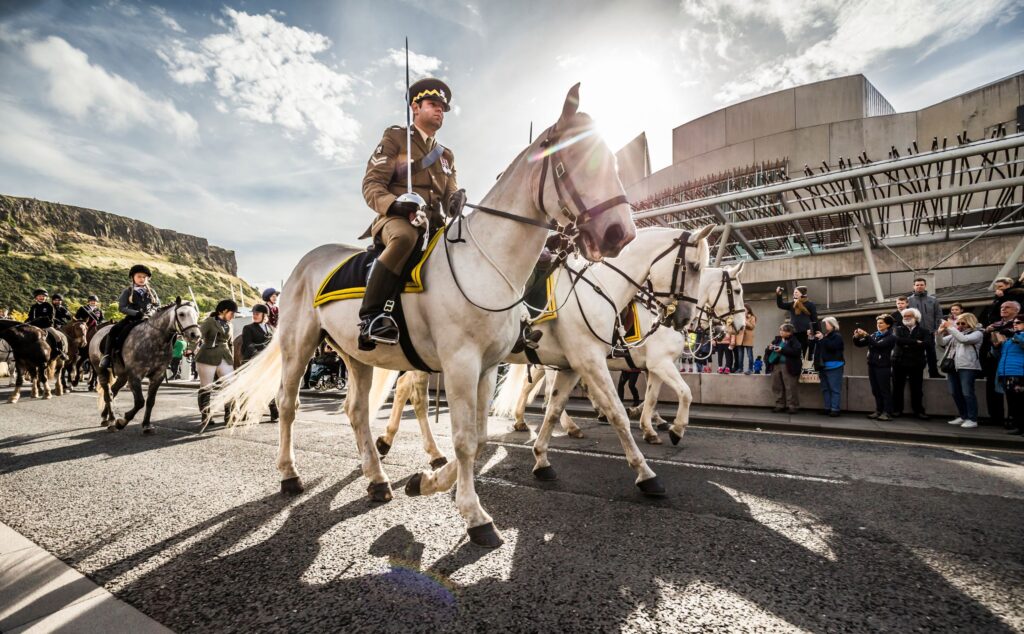
The Edinburgh Riding of the Marches dates from 1579, with the inspection of the Common Land continuing until the demise of the practise in 1718. In 1946 a special ‘Riding of the Marches’ was held in Edinburgh to celebrate peace and the end of the war. Seventy riders took part and a large crowd, reported to be ‘approaching Royal visit dimensions’ greeted the riders in the Royal Mile.
With the modern re-establishment occurring in 2009, the event has grown each year since and now provides an excellent equine spectacle and a celebration of civic pride for the people of Edinburgh and people from across the world to take part in or spectate over a living historical event.
Common Riding, a uniquely Scottish tradition, celebrates the custom of defending common land against encroachment and attack from raiders. It has been described as a celebration of who we are and across the 29 Riding Towns of Scotland sparks annual celebrations involving entire communities, passed down through generations of families, with many young boys and girls aspiring to become the Captain or Lass representing their town.
The tradition of “Riding the Marches” or “Common Riding” as it is known in the Scottish Borders is thought to date as far back, as to the twelfth century when Scottish towns were granted a charter, in effect creating the birth of the town. One of the conditions attached was that the Burgesses of the town were required to examine their March or boundary stones every year and report back that all was well or not, the annual inspections generally took place on horseback.
A number of Scottish towns have records of the annual events dating back to the sixteenth century and have carried on the tradition for centuries. Aberdeen, Dundee, Glasgow and Stirling used to “Ride the Marches” but it is in the South of Scotland where the tradition of “Riding the Marches or Common Riding” is strongest with eleven towns in the Scottish Borders and a number of towns in the South West still having annual rides. The tradition is still carried out further North in some Lanarkshire towns, and towns surrounding and bordering Edinburgh. Linlithgow has a rich tradition dating back centuries although the boundaries are not ridden on horseback.
It would appear that the earliest reference to Edinburgh recording a “Riding of the Marches” was on Halloween, 31st October 1579, when “the Edinburgh town council decreed that the Burgh Marches would be inspected on the day of All Hallowes and that ‘intimatioun to be made the day before’.
On 10th of June 1584, the ‘nichtbouris’ of Edinburgh were instructed to meet together the following Sunday at 5.00am at the Provost’s house and be ready to inspect the Marches”. Back in the early days, rides were held on a regular basis between 1579 and 1718. Town’s people who did not attend the event were fined.
Edinburgh’s last recorded riding of this period took place at 8am on 15th April 1718. No other ridings were carried out until 1946 when a special “Riding of the Marches” was held in Edinburgh to celebrate peace and the end of the war. Seventy riders took part and a large crowd that was reported as ‘approaching Royal visit dimensions’ turned out to watch. The Lord Provost of Edinburgh said that the riding had been ‘a picturesque method of uniting the past with the present’. The Edinburgh Standard Bearer is known as the “Captain”. First and Second Officers support him right and left. The last Captain was Treasurer Murray who went on to become the Lord Provost of Edinburgh the following year in 1947.


